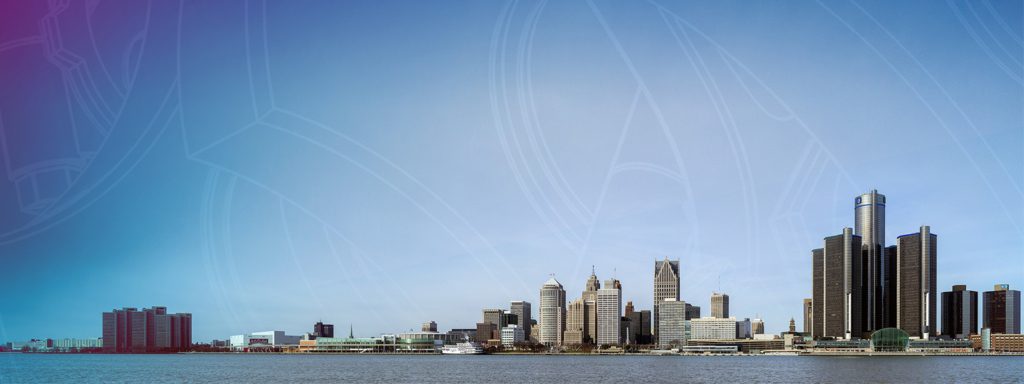By Susan Drake Swift
“This is one of those cases in which the imagination is baffled by the facts.”
So Winston Churchill commented when Nazi leader Rudolf Hess parachuted into Scotland to pursue peace talks in 1941.
Fourteen months after the mediated bankruptcy known as Detroit’s Grand Bargain received the court’s official seal of approval, “baffling” is still a good adjective for the phenomena that led to it. No feel-good Hollywood movie with superheroes riding to the rescue could have contemplated this tableau of noble and ingenious individuals and organizations acting in symphony across the public and private sectors to champion the common good and redeem a great American city and, by extension, the State of Michigan, from fiscal and economic disaster. Yet that is exactly what happened.
A great deal of work remains to be done to deliver on the Grand Bargain’s promise, but the trajectory is rising. The city’s population decline has slowed. The machinery of city government is moving under a “manager mayor.” The skyline bustles with construction cranes. Blight is being removed and historic neighborhoods refurbished. “It used to be,” said one long-time observer, “that you could bowl a bowling ball down these streets, they were so deserted. Now you see young adults and strollers.”
What went right? Enter a quartet of players to set the scene and sing the praises of their fellows: the intrepid federal judge who mediated the bankruptcy; the catalytic community foundation leader who got the philanthropy ball rolling; the charismatic CEO of a national foundation with a long attachment to the city; and the undaunted emergency city manager who kept things together – all propelling, all caught up in a story that, while true, is still hard to believe.

Federal Judge Gerald E. Rosen ‘The Spark Plug’
You are the chief federal judge of the Eastern District of Michigan. It’s 4:06 p.m. on July 18, 2013 and the tragic, colossal, and apparently asset-less bankruptcy of the once great city of Detroit has “crash landed” in your court. Respected bankruptcy judge Steven W. Rhodes agrees with your recommendation to put his retirement on hold and handle the case, but then turns the tables and names one condition: that you be the judicial mediator. You are not so sure. Colleagues question the wisdom of it. Your son, Jake, tips the scales, by invoking your number one hero: “Dad, what would Churchill have done? Do you think he would have refused? Are you really thinking about not doing this bankruptcy? Everyone has a time to stand up and this is your time.” You quickly conclude that any solution generating the requisite funds in the shortest of time frames must tie together two pillars normally not mentioned in the same breath: the lives of some 23,000 city employee pensioners whose retirements are in jeopardy and the who’s who of some of the greatest painters of all time hanging in the city-owned Detroit Institute of Arts (DIA). The DIA’s art collection represents the city’s singular monetizable asset, and all of its creditors are poised to pounce.
The Lions are running mid-summer drills out at Allen Park, so like any all-American male, you sketch a plan to essentially take Detroit from deep in its own end zone to an eventual touchdown on the far side of bankruptcy. If you had known then that this doodle would someday be framed and hung in the Detroit Institute of Arts as a testament to the triumph to come, you might have added some embellishments. But these were the basic brushstrokes: How much? Timeline? How to protect the art? What about the federal government? Where would the money come from? Private donors? Private foundations?

Mariam Noland ‘The Connector’
President, Community Foundation for Southeast Michigan
You believe Detroit’s bankruptcy is like a natural disaster, albeit one 50 years in the making. One that requires a response of the kind made to other events that are quite dramatic and traumatic: you step up for your community. The public view is that the art museum is at stake but what is really at stake is the future of the city. Without a mediated settlement, litigation will go on forever and the city will continue to decline. What is needed is a great deal of money. Now.
When you’re a community foundation you make connections, you know each other. In this case you even hold a fund to benefit the federal court. So it is only natural that you bump into Judge Rosen, the newly appointed bankruptcy mediator, in the deli of your office building. “Let me know if there is anything I can do,” you casually offer. What comes next is the surprise. “Funny you should ask,” he replies – and two days later you are in his chambers listening to his pitch, one he hopes to make to major foundations nationwide, to invest hundreds of millions of dollars. You ask the judge: “How much do know about foundations?” noting that not even during 9-11 or Hurricane Katrina was it customary for major foundations, with their own unique missions and programs, to work in tandem. That said, you agree to pull out your rolodex – yes, a rolodex – and do what only a leader nationally recognized for smarts, integrity, and generally keeping her cards close to her vest, can do: sound the alarm.
You ask 11 foundation heads: would you take an invitation from Judge Rosen to come to Detroit in the very near future to hear his proposition? To a person they say yes. In every instance, either the president or a lead board member attends the now famous 3 ½ hour meeting during which Judge Rosen takes the temperature of his audience, scraps his prepared notes, and improvises a vast common ground among foundations interested in arts and culture, urban revitalization, and human needs. The main takeaway: this is serious, there is an opportunity to help, and for all of us it isn’t going to be business as usual.

Alberto Ibargüen ‘The Generator’
President and CEO, John S. and James L. Knight Foundation
As the former prize-winning publisher of the Miami Herald and El Nuevo Herald, and former board chair of PBS and the Newseum, you are a creative, courageous force in philanthropic circles and the first foundation leader Mariam Noland calls. She has served on your board and knows of your foundation’s historical links with Detroit through the now-dissolved Knight-Ridder newspaper chain’s Detroit Free Press (now owned by Gannett). Supporting the citizens of Detroit is second nature to the Knight Foundation, having provided $224 million to the city since 1950. The Knight board has a custom of revisiting the foundation’s key communities each year and, as it happens, you have just taken them to Detroit, where they witnessed the challenges and possibilities with their own eyes. Weeks later, when the time comes for your board to consider a Grand Bargain contribution of $20 million, Beverly Knight Olson rises to say: “My Uncle Jack loved Detroit and the Free Press was ‘his newspaper.’ Twenty million is not enough.” It becomes $30 million.

Emergency City Manager Kevyn Orr ‘The Radiator’
Your firm, the Washington, D.C.-based Jones Day, pitches to become the legal team handling Detroit’s bankruptcy. The next day you receive a different kind of invitation: would you apply to be Detroit’s emergency city manager? “No” is your immediate thought, happy with your job and not wanting to leave your wife and two small children behind. But you talk it over with your managing partner. He deems it a call to action, true, not one necessarily in your comfort zone, but that doesn’t mean you shouldn’t do it. Having handled the bankruptcy of the Detroit-based automaker, Chrysler, you and your firm have longstanding ties to the region. The city is down on its luck and as an African-American bankruptcy restructuring professional, it doesn’t go unnoticed that it is an 83 percent minority city. What clinches it for you is the commitment of the man who hires you, Michigan Governor Rick Snyder. “When you have a principal committed to making something work, you know that people will have skin in the game.”
You arrive in Detroit in March 2013, a week after former Mayor Kwame Kilpatrick is convicted of perjury and obstruction of justice, having underestimated the angst gripping the city. Some detractors suggest it is a plot by a white Republican governor in Lansing to take over an autonomous black and Democratic city. Some call you an Uncle Tom and a tool of the financial interests bent on denuding the city of one of its most important cultural assets. Your decision to have the DIA’s art appraised by Christie’s auction house sends shock waves through the city and beyond. You say: “I believe in honest discussion: I could not go to the pensioners and talk concessions, and to the financial creditors and ask for pennies on the dollar, without also factoring in the true value of the Detroit Institute of Arts. With the clock ticking and only 18 months in which to turn things around, I could not waste time. I had to adhere to the task and use the powers I had to leave the city in a position of stability and on a positive path.”



